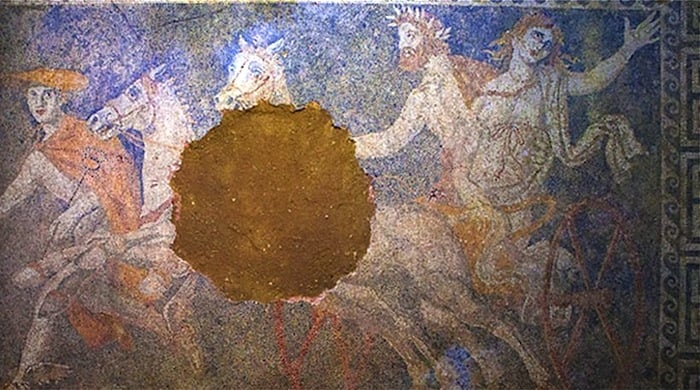Art & Exhibitions
Alexander the Great-Era Tomb Yields Amazing New Murals of 4th Century BC Life


Sarah Cascone

The hits just keep on coming at the Alexander the Great-era Grecian tomb at Amphipolis, one of the world’s largest-known ancient burial sites. As reported by the AFP, the latest discovery at the site is a group of columns painted with scenes of daily life.
“After cleaning the columns, images of people, objects, and utensils were uncovered,” announced Greek culture minister Kostas Tassoulas at a recent press conference.
Excavations at the 4th-century BC site, which began in mid-August, have already yielded a wealth of archaeological treasures. The entrance to the highly-decorated tomb is flanked by two impressive caryatid statues (see: “Two Rare Statues Discovered in Greek Tomb“), and a magnificent mosaic inside the structure was discovered last month (see: “Alexander the Great Tomb Yields Newly-Discovered Mosaic“).
Archaeologists suspect the tomb may be linked to Alexander the Great, perhaps holding the remains of one of his generals; his Persian wife, Roxana; or his mother, Olympias. When a skeleton was uncovered earlier this month, the culture ministry released a statement claiming that the deceased was “a powerful personality, which can be seen from this unique tomb.”
“We will have the first indications (about the identity) after the bones are examined at an anthropological laboratory,” culture ministry official Lisa Mendoni told the AFP. The chances that the tomb’s inhabitant could be Alexander himself are considered quite slim. The world conqueror died at the young age of 32.
With luck, the newly-uncovered paintings will provide further clues toward the occupant’s identity. Meanwhile, the hunt is underway for more tombs in the area, with a team from the University of Thessaloniki employing three-dimensional tomographic imagery in their search.